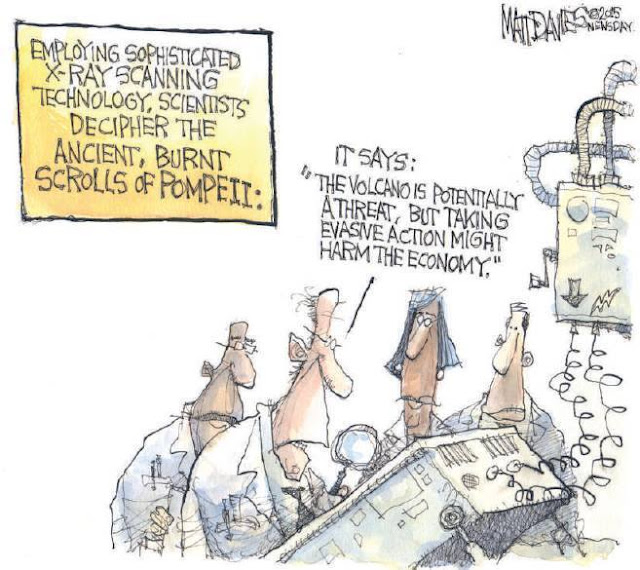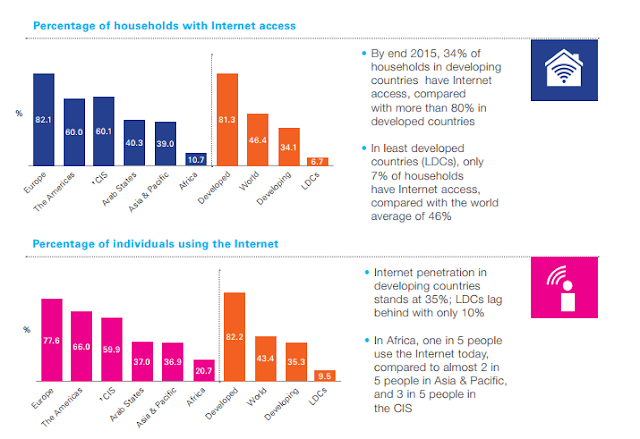Monday, August 31, 2015
Friday, August 21, 2015
The Coalition's Communist Sympathies
Joe Hockey has a profound faith in the communist leadership of China. He, together with many other economic liberals, believe that Chinese policy-makers can smoothly transition the economy away from an investment-led model to a consumption driven one. The irony of this position, however, seems lost on our policy elite. Hockey is a true believer:
Krugman's critique of growth 'miracles' highlights that eventually extensive growth must turn into intensive growth. The transition, however, is not easy and requires significant investment in education and skill development. It also necessitates dealing with the costs of
Investment-driven growth cannot go on forever, eventually investment must give way to consumption and productivity enhancements. In a recent article Krugman outlines the problem:
From Lou Jiwei’s lips to my ears, ‘we have the fiscal tools, we have the monetary tools and we will do whatever we must’. That was sitting in a private meeting room in the Great Hall of the People and I believe them because they’ve shown it ... We’ve got prosperity momentum ... There are a record 165 registered cranes in the Sydney CBD at the moment. You can see it in Melbourne and even in Hobart, there are more cranes.Chinese policy-makers have done well so far. Reserve Bank governor, Glenn Stevens, comments that:
They have done a pretty good job of managing things thus far. I would say there are few countries that could better their track record of growth — I cannot think of any.China's growth trajectory has been the most exciting economic story of the past 30 years, but growth 'miracles' inevitably end up as growth slowdowns. According to Eichengreen et al.:
Our results suggest that an exceptionally low consumption share of GDP is positively associated with the probability of a slowdown ... While an undervalued exchange rate may be a driver of China’s imbalances, it is by no means the only one. In fact a wide range of factor price distortions favors the production of tradables over nontradables and thereby results in an unusually low consumption share of GDP. Lax corporate governance of state-owned enterprises limits pressure to pay out dividends and acts as a de facto subsidy for investment. The absence of a social safety net and well-developed domestic financial markets provide a strong incentive for precautionary saving on the part of households.
In some circles, the assumption is pervasive that China will continue to grow rapidly. Equivalently, it is assumed that China will be able to avoid the middle income trap and jump to upper-middle-income-country status. But it is worth recalling that only a small group of countries successfully completed this transition in the second half of the 20th century, while a much larger group, in Latin America for example, are still struggling to escape the middle income trap. Given China’s huge size and daunting array of structural challenges, completing this transition is far from a fait accompli.Whether China's growth slowdown will be due to the middle-income trap or simply reversion to the mean is a moot question, but what matters is how policy-makers manage the transition. As the Soviet Union, Brazil and many other countries have shown, this is no easy task. Paul Krugman’s mid-1990s article “The Myth of Asia’s Miracle” compared the growth of the newly industrialising countries of Asia to Soviet growth in the 1950s and 1960s, a period when it appeared that the Soviets were on the brink of challenging the United States economically as well as militarily. “Perspiration not inspiration” had been the major factor he contends. Japan, he noted, was different because:
Japan, unlike the East Asian ‘tigers’, seems to have grown both through high rates of input growth and through high rates of efficiency growth. Today's fast-growth economies are nowhere near converging on U. S. efficiency levels, but Japan is staging an unmistakable technological catch-up.Krugman noted at the time that Japan was experiencing an unmistakable “growth slowdown”, which accounted for why 1980s projections of eventual Japanese dominance turned out to be so wrong. Krugman also noted the differences of the Chinese growth story, pointing out that, “its population is so huge that it will become a major economic power if it achieves even a fraction of Western productivity levels”. Prescient indeed.
Investment-driven growth cannot go on forever, eventually investment must give way to consumption and productivity enhancements. In a recent article Krugman outlines the problem:
China is at the end of an era — the era of superfast growth, made possible in large part by a vast migration of underemployed peasants from the countryside to coastal cities. This reserve of surplus labor is now dwindling, which means that growth must slow.
But China’s economic structure is built around the presumption of very rapid growth. Enterprises, many of them state-owned, hoard their earnings rather than return them to the public, which has stunted family incomes; at the same time, individual savings are high, in part because the social safety net is weak, so families accumulate cash just in case. As a result, Chinese spending is lopsided, with very high rates of investment but a very low share of consumer demand in gross domestic product.
This structure was workable as long as torrid economic growth offered sufficient investment opportunities. But now investment is running into rapidly decreasing returns. The result is a nasty transition problem: What happens if investment drops off but consumption doesn’t rise fast enough to fill the gap?
The assumption appears to be that China's policy-makers are different to western policy-makers. Perhaps this is based on the belief that they are not subject to the same sort of democratic pressures and are able to act with more leeway over the short to medium-term. What this assumes is that Chinese elites have extraordinary powers to manage the huge Chinese economy and that they are able to break free of those with vested interests in the current economic structure. We shall find out over the next few years, just how competent Chinese policy-makers are at transitioning the Chinese economy to more sustainable consumption driven growth.
Asia's rise has clearly benefitted Australia. The rise of Japan, followed by South Korea and Taiwan, Singapore, Malaysia, Thailand and other non-communist countries of Southeast Asia provided significant export markets for Australian commodities, but did not lead to a sustained structural increase in their value. China, changed that. Not only did rapid Chinese demand increase the prices Australia received for its exports, but Chinese manufacturing production helped to decrease the price of Australian imports. Manufactured goods made (or assembled) in China became significantly cheaper. Chinese competitive pressures also helped to keep in check the prices manufacturers throughout the world could charge for their goods.
Currently there are several narratives about Australia’s economic future. The first is an acceptance of Australia’s role as a resource exporter built on the back of long-term Asian demand and a high exchange rate. Alongside this story is one about a growing Asian middle class, which will be increasingly receptive to utilising Australian services. This view means that there will be an alternative market for Australian exports after the Asian giants become less resource intensive economies as they progress up the income ladder.
All of these positive narratives are based on a projection that Asia's remarkable rise over the past half century will continue over the next half. The possibility that Asia may not continue its rapid economic rise is largely dismissed, although the likelihood that Asia will become conflict-ridden is common in international relations, foreign policy and security studies. The Secretary of the Department of Foreign Affairs and Trade, Peter Varghese, seems less sanguine about future Chinese possibilities and his words are worth quoting at length:
Asia's rise has clearly benefitted Australia. The rise of Japan, followed by South Korea and Taiwan, Singapore, Malaysia, Thailand and other non-communist countries of Southeast Asia provided significant export markets for Australian commodities, but did not lead to a sustained structural increase in their value. China, changed that. Not only did rapid Chinese demand increase the prices Australia received for its exports, but Chinese manufacturing production helped to decrease the price of Australian imports. Manufactured goods made (or assembled) in China became significantly cheaper. Chinese competitive pressures also helped to keep in check the prices manufacturers throughout the world could charge for their goods.
Currently there are several narratives about Australia’s economic future. The first is an acceptance of Australia’s role as a resource exporter built on the back of long-term Asian demand and a high exchange rate. Alongside this story is one about a growing Asian middle class, which will be increasingly receptive to utilising Australian services. This view means that there will be an alternative market for Australian exports after the Asian giants become less resource intensive economies as they progress up the income ladder.
All of these positive narratives are based on a projection that Asia's remarkable rise over the past half century will continue over the next half. The possibility that Asia may not continue its rapid economic rise is largely dismissed, although the likelihood that Asia will become conflict-ridden is common in international relations, foreign policy and security studies. The Secretary of the Department of Foreign Affairs and Trade, Peter Varghese, seems less sanguine about future Chinese possibilities and his words are worth quoting at length:
The meta challenge of Australian foreign policy is how to maximise economic opportunity and minimise strategic risk when economic growth is rearranging our strategic landscape.
The past several decades have been decades of growth in Asia. But now virtually all the major Asian economies face deep structural challenges. In many cases their political systems will struggle to address them.
It is here, at the intersection of economics and politics, that the biggest risk to the Asian growth story lies. And while Asia undoubtedly will continue to play a big role in Australia’s economic future we need to understand this rising political economy risk.
Australia’s security ultimately will depend on how the US, China, India, Japan, Russia and others manage the complexity of their relationships. At the heart of these relationships is the tension between economic interdependence and strategic competition.
Economic space is infinitely flexible. Strategic space tends to be much less so. The challenge of statecraft and leadership is to ensure one does not derail the other.
China is at the start of a profound transition in its economic model towards more market-based and consumption-driven growth. The challenges are huge and we underestimate them at our peril. It is a highwire act that seeks to preserve the Chinese Communist Party’s monopoly of power while allowing the market to determine the allocation of resources. There is no certainty about how this will end, although none of us gains if China fails.Australian policy narratives seem divided between dream and nightmare scenarios, with economic policy-makers sanguine about the future and security policy-makers increasingly anxious about what China's economic rise might mean for Australia's longer-term security. Another important dimension over the next few years will be the attitude of the Australian electorate to increased Chinese investment.
Thursday, August 20, 2015
Subscribe to:
Posts (Atom)


















































